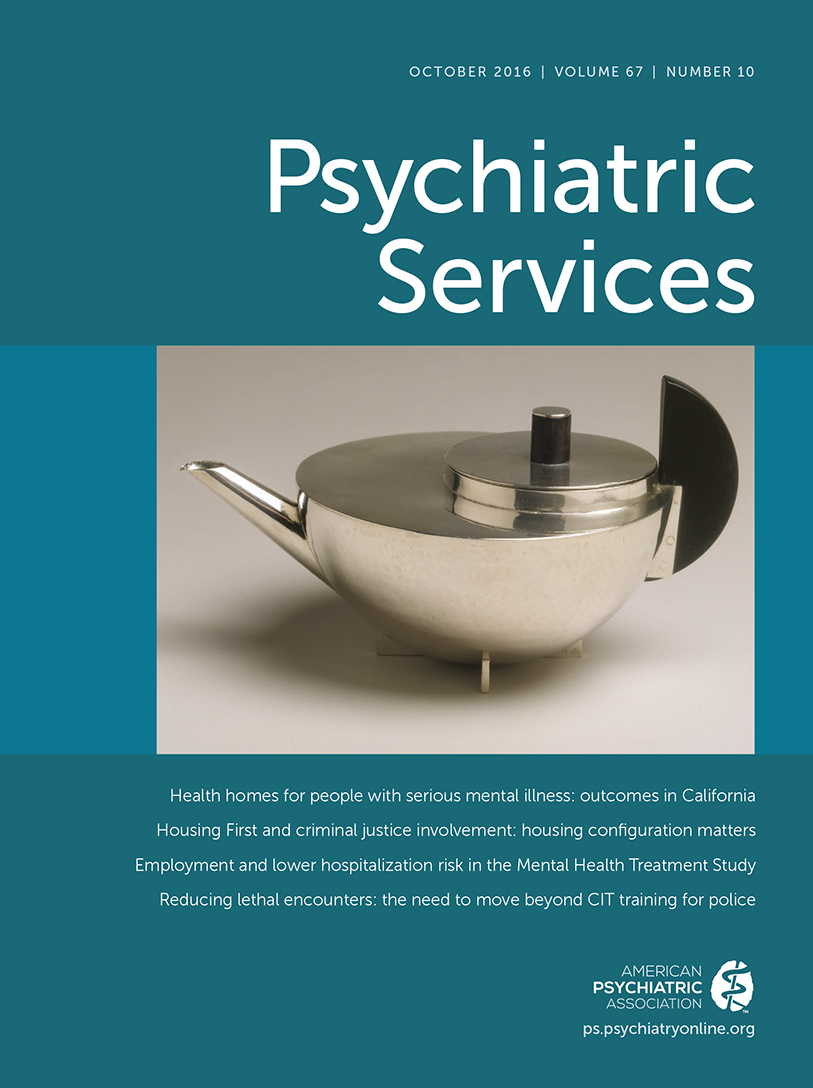This Month’s Highlights
Integrated Health Homes in Los Angeles County
Health homes, also called medical homes, are designed to integrate general medical and behavioral health services and combine them with community supports to improve access and quality and reduce costs. In the lead article, Todd P. Gilmer, Ph.D., and colleagues report on outcomes of nearly 2,000 persons enrolled in a Los Angeles County pilot program that implemented two models of health homes for persons with serious mental illness, chronic general medical conditions, and co-occurring substance use disorders. In addition to documenting changes in physical health status and mental health recovery, researchers made site visits to assess how well the ten programs integrated care. To measure integration, they used the Integrated Treatment Tool (ITT). Whereas most measures focus on mental health care integration into primary care, the ITT assesses integration of primary care into specialty mental health care. Clients in more highly integrated programs had greater improvements in physical and mental health and higher rates of screening for common chronic conditions. Findings suggest that program administrators should implement procedures that encourage measurement and continuous improvement of integration. The researchers call for efforts to identify predictors of integration and factors that drive improvements in health outcomes in integrated health homes (page Original article: 1062).
Risks of Hospitalization for Persons With Mental Illness
Persons with serious mental illnesses are frequent consumers of nonpsychiatric medical care. However, this care may not meet their unique needs, which may contribute to the increased morbidity and mortality seen in this population. Gail L. Daumit, M.D., M.H.S., and colleagues examined records of 790 medical-surgical hospitalizations between 1994 and 2004 for a cohort of 253 adults with serious mental illnesses. They found a mean of 5.8 patient safety events per hospitalization. Cohort individuals were at higher risk of being harmed by patient safety events compared with the general population: 142 patient safety–related physical harms per 100 admissions, compared with 25–49 harms per 100 admissions. Harms to patients in the cohort were positively associated with 30-day mortality. Although underlying disease may have contributed to these outcomes, the authors noted, providers’ inexperience caring for the special needs of this group and overuse of medication to sedate agitated patients may also have played a role (page Original article: 1068).
Housing First in Canada and Australia
Two studies this month report on Housing First participants. In the first, Nicole Kozloff, M.D., and colleagues were interested in profiling the 164 youths (ages 18 to 24) who represented less than 10% of the homeless participants in At Home/Chez Soi, a Housing First trial in five Canadian cities. More than three-quarters of these youths had not finished high school, and two-thirds had a drug use disorder. In the past six months, about half had been assaulted and nearly two-thirds had visited an emergency department. Findings suggest that homeless youths have service needs that are distinct from those of adults, as well as different trajectories to homelessness (page Original article: 1083). In the second study, Elizabeth Whittaker, B.A., B.Bus.Man., and colleagues found that the way in which housing was configured in two programs in Sydney, Australia, made a difference in the number of criminal justice contacts among 63 participants. Contacts decreased significantly among those in rental properties scattered throughout the city, compared with those housed together at a congregate complex of apartments. However, scatter-site participants experienced increased boredom, whereas those in congregate housing reported improvements in social relationships (page Original article: 1091).
Mental Health Treatment Study: Findings and Implications
The Social Security Administration’s Mental Health Treatment Study (MHTS) was a randomized controlled trial (2006–2010) in which supported employment was offered to more than 2,000 SSDI beneficiaries with psychiatric disabilities at 23 U.S. sites. The original study found improved mental health and quality of life among those who gained employment. In this issue, a secondary analysis of MHTS data by Alison Luciano, M.P.H., Ph.D., and colleagues found that gaining employment also reduced participants’ likelihood of psychiatric hospitalization, even after the analysis adjusted for many baseline characteristics (page Original article: 1131). In the Open Forum, Robert E. Drake, M.D., Ph.D., and colleagues make four policy recommendations based on MHTS findings—one of which is to focus future research on how to help people avoid needing SSDI rather than helping beneficiaries to leave the program (page Original article: 1139). In a Taking Issue commentary, David A. Adler, M.D., emphasizes the importance of work in the lives of people with mental illnesses and notes that improving employment outcomes requires going beyond symptom treatment to provide whatever it takes to improve functioning (page Original article: 1051).



